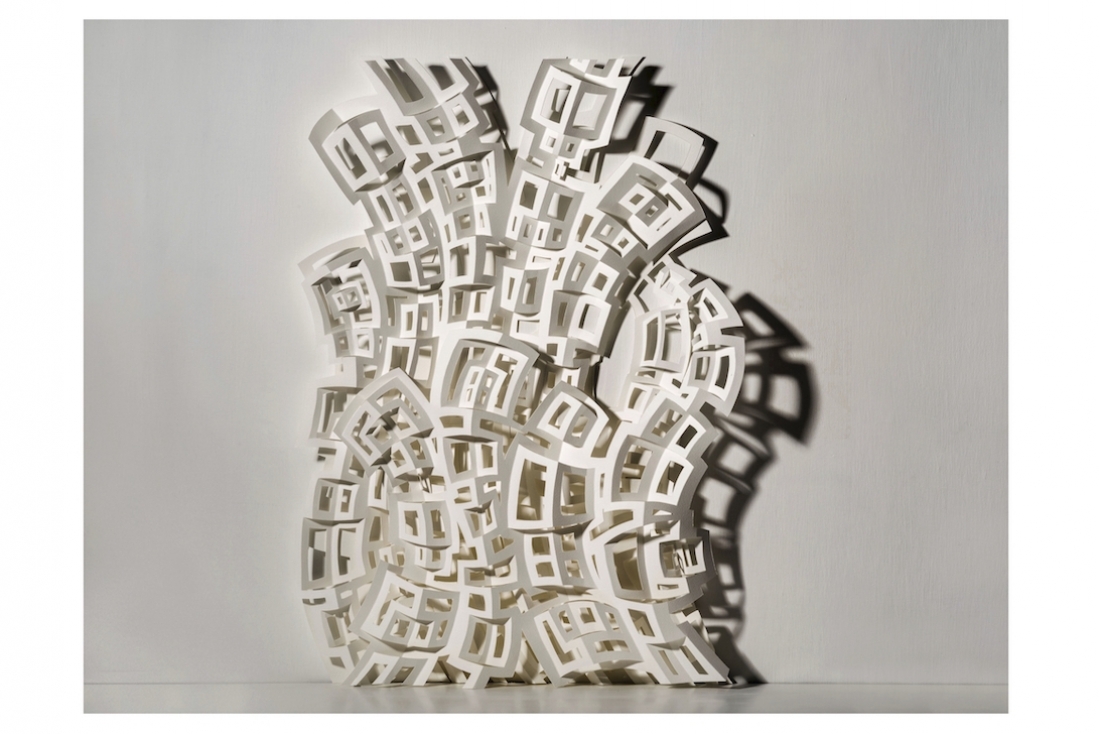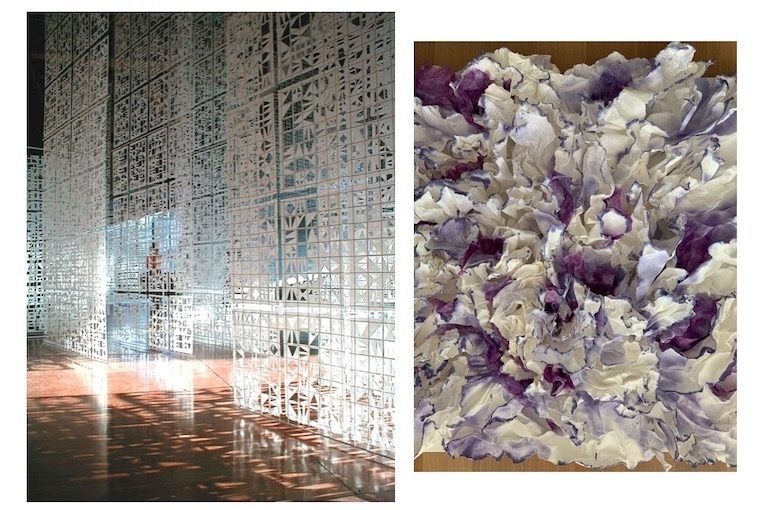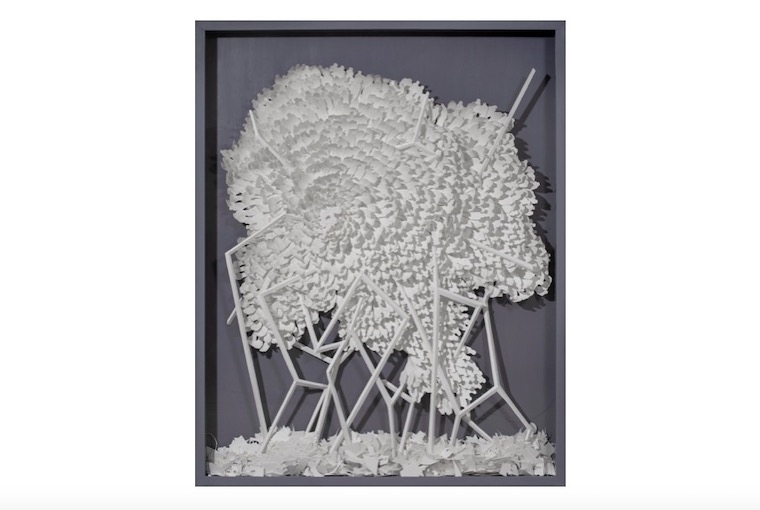
Sachin George Sebastian 2 (Custom)

Sachin George Sebastian 2 (Custom)
Paper. A surface to write or draw or doodle or print. To mark or stain. A material to fold or layer, to cut, puncture or impress. Explored by artists as matter, method or metaphor, paper kindles a sense of nostalgia and a sense of being made by hand.
The versatility and potential of the material is witnessed in the range of forms it can inhabit- two-dimensional and three-dimensional, and the range of meanings it can represent - from fragility and ephemerality to weight and rigidity, from clean and pure to wrinkled and frayed. Of Paper explores the work of six contemporary artists who employ paper in their practices.
Ankon Mitra’s art practice is informed by his career as an architect and his involvement in landscaping and horticulture which have resulted, over the years, in a keen observation of the folding and unfolding of nature- the making and unmaking of mountains, rivers, all forms of plant and animal life. This constant flux defines the forces of growth, decay and change, across scales and temperaments. Describing the ‘fold’ as an act of renewal, Mitra renders forms based on the principles of Origami and Kirigami, where the application of a fold or a cut has the ability to create robust sculptural forms of seemingly flat sheets of paper. Organized into repetitive patterns, the folds explore gravity, light and volume.

L: Pierre Legrand 1 (Custom)
R: Ziya-Yesterday Today and Tomorrow
The means by which nature occupies space, as witnessed for instance, in the unfurling of a new leaf- the form that inspires Mitra’s Bells of Light neither reduces nor enhances the resulting form, but rather transforms it. By exploring the physiological changes caused by light, and by morphogenesis, i.e. the process by which an organism, tissue or organ develops its shape, Mitra crafts a series of suspended paper sculptures that rely on folds, slits and accordion-like pleats that radiate outward, thereby also optimizing the use of space.
The play of light and shadow, of becoming and unbecoming is scripted as an abstract, sensorial language in the work of Pierre Legrand. Writer John Quinn in his 2001 curatorial essay ‘Speaking Light’ on Legrand’s work writes, “While talking to me about his work one day, Pierre cited Castaneda, who said that when looking at a tree, one should not observe the leaves, but the spaces between the leaves. Indeed, one of the first things one notices about Pierre’s ‘alphabets’ is that the letters are but empty spaces – it is only the material around them that is physical.” Light Matter, 2001 is magical and fabulous in the way it immerses its viewer within its tall and thin perforated paper walls, and yet at another level, suggests the porosity of language.
Ziya Tarapore also draws from nature; her works underpinning elements of fantastical otherworldliness. The bright colours and shapes of her multi-layered foliage pieces merge into amorphous underwater creatures with shaded and camouflaged bodies, and textures that seem to grow and shrink at once. Trained in textiles and driven by the use of colour, Tarapore’s art evolves beyond her observations of nature and flora, to also inadvertently probe the relevance of craft and design to artistic practices.

Sachin George Sebastian 1 (Custom)
From a burst of colour, to the purity of the colourless. Sachin Tekade’s practice is an engagement in white- as colour, as sound, as space, as smell, as touch. Tekade’s works are expressions of phenomena that maintain the natural balance- at a perceptible human level, and at a cosmic level of waves of light, sound and air. The resultant art emerges as tactile engagements with subtle elemental nuances that register fluctuations from the natural order, either occurring organically or as a consequence of human activity.
Steeped in the architectural landscape of our metropolises is the work of Sachin George Sebastian and Chetnaa. Sebastian considers the chaos of the Indian city through multi-layered paper renditions of built environments- tall and short buildings, roads, sidewalks and bridges, shiny lights, sirens, horns and a cacophony of voices, that spiral outward from compositely framed natural forms of flowers and foliage. Chetnaa’s art on the other hand, is drawn from personal impressions of the city’s architecture. Her series of embossed blocks on paper, rising both vertically and horizontally, speaks of our progressively growing footprint on the land we occupy. Devoid of colour, and expressly pressed into the paper, her work recalls the building blocks of alleged development- of cities growing and spaces shrinking in the manner in which blocks are stacked in rows or columns, or arranged as grids or pyramids. Some are shaky while others are stable and static. Her use of the line and her language of abstract geometry shapes her minimalistic practice.
Of Paper is an exploration of forms that shape our natural and constructed environment, fuelling an understanding of its limits and its immensity. The six artists share a knowledge of geometry and an interest in the structural make-up of our surroundings- natural and man-made, that then expresses in different ways, in and of paper.
The exhibit opens on September 28th September and continues till 2nd November 2019 at Gallery Art Motif.